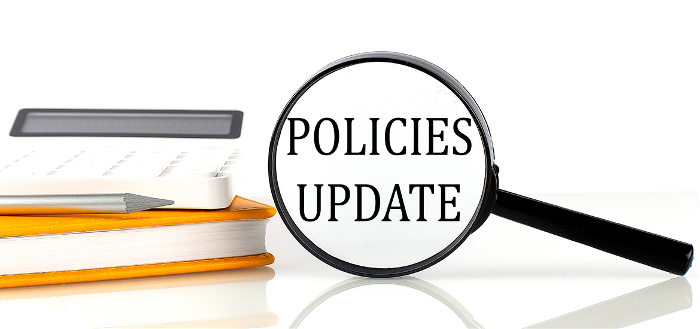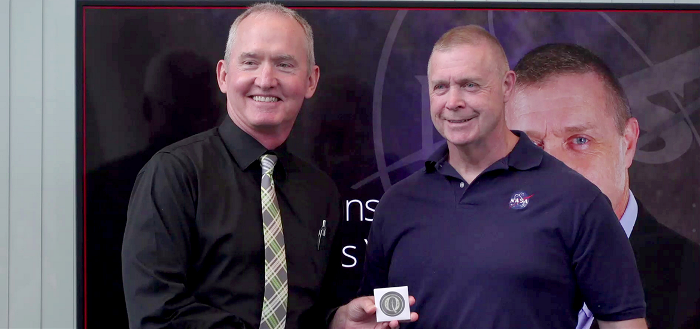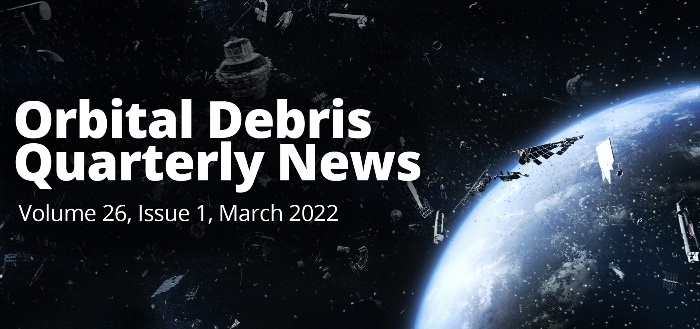NPD 8700.1 Restructured to Focus on Evolved Agency Needs
July 28, 2022
4-minute read

NASA’s Office of Safety and Mission Assurance (OSMA) updated NPD 8700.1, NASA Policy for Safety and Mission Success, effective July 28, 2022, building on developments from the past decade, including experiences from commercial crew, discussions about robotic mission classification, changes to the agency’s governance handbook and NASA Aerospace Safety Advisory Panel recommendations. OSMA solicited and incorporated feedback from centers, mission directorates and other offices into the final release.
MCWG Holds Hybrid Technical Interchange Meeting
July 13, 2022
4-minute read

The Metrology and Calibration (MetCal) Working Group (MCWG) held its annual Technical Interchange Meeting (TIM) April 25-28, 2022, at NASA Wallops Flight Facility. Agency MetCal representatives, calibration laboratory managers, metrologists and other experts from associated fields across all of NASA’s 10 field centers, and two component centers, met in-person and virtually at this hybrid event to discuss technical challenges, best practices and improvements related to the agency’s MetCal program.
NASA Collaborates With External Organizations to Improve Workforce Development
June 29, 2022
6-minute read

NASA’s radiation effects community, with support from the NASA Electronic Parts and Packaging program, collaborated with Texas A&M University academia and Radiation Effects Facility staff to develop a radiation effects training “boot camp,” first held in February 2022, with plans for future annual training. The boot camp was in response to a National Academy study called “Testing at the Speed of Light,” that looked at the available U.S. infrastructure available to provide the types of energy and ions used to do the type of spaceflight testing NASA aims to do and also the people available to do the work. Training included attendees from government, industry and academia.
ISHMC Meeting Brings Together Institutional Safety and Health Experts
May 25, 2022
3-minute read

The Institutional Safety and Health Managers Council (ISHMC) brought together safety and health leaders from across the agency this April at Kennedy Space Center. The meeting marked the beginning of a new approach to safety and health management at the agency level.
O’Connor Honored for Career Embodying Yes, If Attitude
May 18, 2022
3-minute read

Ken O’Connor, Mishap program executive at the NASA Safety Center, received the “Yes, If” coin from Chief of Safety and Mission Assurance Russ DeLoach during his retirement celebration on May 5. O’Connor retired after more than 30 years of NASA service.
COSPAR Meeting on Planetary Protection for Crewed Mars Missions
May 09, 2022
1-minute read

The Committee on Space Research (COSPAR) is holding a workshop June 1 and 2, 9:30 a.m. to 3 p.m. Eastern, for experts to weigh in on aspects of quarantine and sample containment for the first crewed Mars mission.
Changes to NPR 8000.4 Reflect Increased Relevancy of Cyber-Related Threats
April 22, 2022
3-minute read

Revision C of NPR 8000.4, Agency Risk Management Procedural Requirements went into effect on April 19, 2022. The changes made primarily reflect the increasing relevance of cyber-related threats and incidents across both government agencies and the private sector. The update reflects an action item from the NASA Enterprise Protection Board to the Office of Safety and Mission Assurance to make the subject of cybersecurity and cyber risk explicit within NPR 8000.4.
First 2022 Issue of ODQN Now Available
March 22, 2022
1-minute read

The latest issue of Orbital Debris Quarterly News (ODQN) is now available. This March 2022 issue includes the articles "The Intentional Destruction of Cosmos 1408," "Orbital Debris Engineering Model (ORDEM) 3.2 Release" and "Debris Assessment Software (DAS) 3.2.1 Release." Fragments from the Russian Anti-Satellite test in November 2021 were added to the new ORDEM and DAS. The timely release of the two models will help satellite operators better assess risks from Orbital Debris for the safe operations of their missions.
Jean Hill Receives Yes, If Coin for Embodying the “Yes, If” Approach
February 17, 2022
2-minute read

Jean Hill, Human Landing Systems (HLS) and Lander Ground Operations Design Systems Safety Reliability and Maintainability engineer, Exploration Research and Technology Office at Kennedy Space Center, received a “Yes, If” coin for continuously embracing the “Yes, If” approach in her work. Hill is willing to have the tough and honest conversations that address mitigations needed to ensure the HLS program is meeting and identifying safety requirements.
NASA Issues New Nuclear Policy: NPR 8715.26
February 07, 2022
3-minute read

The Office of Safety and Mission Assurance recently released NPR 8715.26, Nuclear Flight Safety, effective Feb. 3, 2022. The new NASA Procedural Requirements (NPR) follows the 2019 National Security Presidential Memorandum-20 overhaul of the federal process for nuclear launch authorization of space nuclear systems and the 2020 release of Space Policy Directive-6, which established a national strategy to ensure the development and use of space nuclear power and propulsion systems, “when appropriate to enable and achieve the scientific, exploration, national security, and commercial objectives of the United States.” The NPR also brings NASA policy into alignment with present day practices.